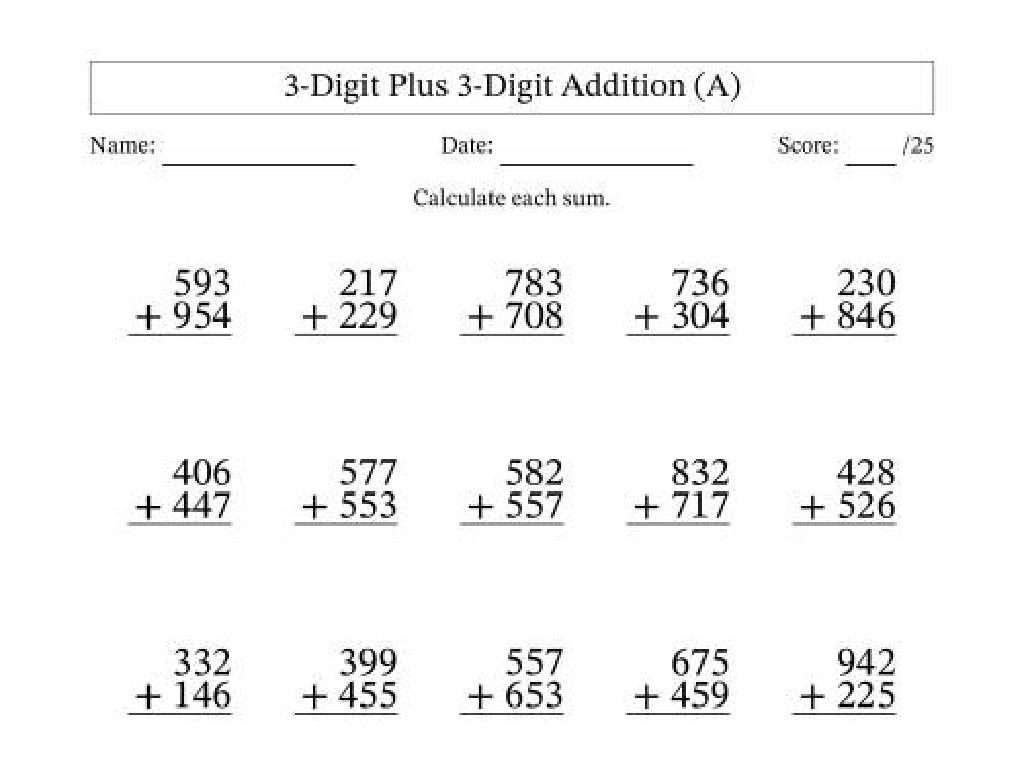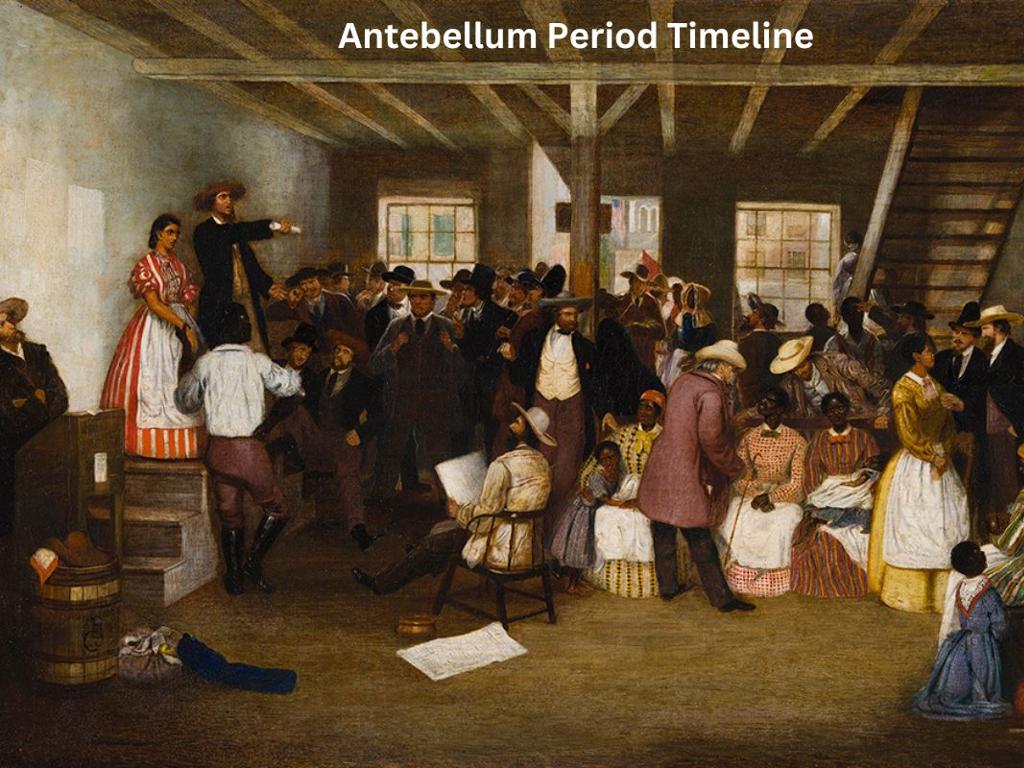Add And Subtract Linear Expressions
Subject: Math
Grade: Seventh grade
Topic: Equivalent Expressions
Please LOG IN to download the presentation. Access is available to registered users only.
View More Content
Adding and Subtracting Linear Expressions
– Algebra’s language basics
– Defining equivalent expressions
– Expressions with the same value, e.g., 2(x + 3) and 2x + 6
– Adding linear expressions
– Combine like terms, e.g., (3x + 2) + (5x – 3) = 8x – 1
– Subtracting linear expressions
– Subtract like terms, e.g., (7x + 4) – (2x + 6) = 5x – 2
|
This slide introduces students to the foundational concepts of algebra, focusing on adding and subtracting linear expressions as a part of understanding equivalent expressions. Start by explaining the basic terminology and symbols used in algebra. Then, define equivalent expressions as expressions that may look different but have the same value. Use simple examples to demonstrate how to add and subtract linear expressions by combining like terms. Emphasize the importance of maintaining balance on both sides of the equation. Provide practice problems for students to apply these concepts and solidify their understanding.
Understanding Linear Expressions
– Define a linear expression
– An algebraic expression with one or more terms, usually with a constant and a variable
– Examples of linear expressions
– For instance, 3x + 2 or 7 – 4y are linear expressions
– Identify terms, coefficients, constants
– Terms are the parts added together, coefficients are numbers multiplying the variable, and constants stand alone
– Practice with real examples
– Use expressions like 5x + 3 and 2x – 7 to show how to identify parts
|
This slide introduces the concept of linear expressions, which are foundational in algebra. Start by defining a linear expression as an algebraic expression that can have one or more terms, each consisting of a variable, a coefficient, and possibly a constant. Provide clear examples of linear expressions and break them down to show the different parts. Emphasize the role of coefficients and constants. Engage students with practice examples, asking them to identify terms, coefficients, and constants in each expression. This will prepare them for adding and subtracting these expressions in subsequent lessons.
Adding Linear Expressions
– Combine like terms
– Terms with the same variable part, e.g., 3x and 5x
– Apply associative property
– Group numbers in any order, (a+b)+c = a+(b+c)
– Use commutative property
– Change order, a+b = b+a
– Work through an example
– (3x + 2) + (5x + 4) becomes 8x + 6
|
This slide introduces students to the concept of adding linear expressions by combining like terms and applying the associative and commutative properties. Start by explaining that like terms have the same variables raised to the same power. Then, demonstrate how the associative property allows us to regroup terms for easier addition, and the commutative property lets us rearrange the terms. Use the example (3x + 2) + (5x + 4) to show these concepts in action, resulting in a simplified expression of 8x + 6. Encourage students to practice with additional examples and to always look for like terms when adding linear expressions.
Subtracting Linear Expressions
– ‘Subtracting’ in algebraic terms
– Subtracting expressions combines them into one equivalent expression.
– Distribute the negative sign
– Apply the negative to each term in the second expression.
– Example: (7x + 3) – (2x + 5)
– Subtract (2x + 5) from (7x + 3) by distributing the negative.
– Simplify to find the result
– Combine like terms to simplify: 5x – 2.
|
This slide introduces the concept of subtraction in algebra, which is different from arithmetic subtraction because it involves combining like terms to simplify expressions. Emphasize the importance of distributing the negative sign across the second expression before combining like terms. Use the example (7x + 3) – (2x + 5) to illustrate the process step by step. Show how to distribute the negative sign, combine like terms, and simplify the expression to 5x – 2. Encourage students to practice with additional examples and to check their work by adding the original expressions to see if they get an equivalent expression.
Practice: Adding & Subtracting Linear Expressions
– Add: (2x + 6) + (4x – 3)
– Combine like terms: 2x + 4x and 6 – 3
– Subtract: (x + 8) – (3x – 2)
– Distribute the negative: x – 3x and 8 – (-2)
|
This slide is aimed at providing students with practice problems to reinforce their understanding of adding and subtracting linear expressions. For the addition problem, guide students to combine like terms by adding coefficients of the same variable and constants separately. For the subtraction problem, remind them to distribute the negative sign before combining like terms. Encourage students to work through these examples independently, then review the solutions as a class. Offer additional similar problems for extra practice and ensure to clarify any misconceptions about combining like terms and distributing negatives.
Class Activity: Expression Scavenger Hunt
– Find expressions in the classroom
– Pair up for addition or subtraction
– Work together to combine expressions
– Share findings with the class
– Discuss how you solved the expressions
– Reflect on the activity
– Think about what you learned
|
This interactive activity is designed to engage students in identifying and manipulating linear expressions in a fun and collaborative way. Students will search the classroom for expressions hidden in advance by the teacher. Once found, they will work in pairs to add or subtract these expressions, practicing their skills in combining like terms and simplifying expressions. Afterward, each pair will present their original expressions and their simplified results to the class, explaining their process. This will foster a collaborative learning environment and enhance their understanding of linear expressions. The reflection at the end will help consolidate their learning experience.
Homework and Wrap-Up: Practice and Preparation
– Complete tonight’s homework assignment
– Review adding and subtracting linear expressions
– Revisit today’s examples and practice problems
– Preview multiplying linear expressions
– Look at examples of multiplying terms like 3x(4x + 5)
– Bring any questions to class tomorrow
|
For homework, students should complete the assigned problems focusing on adding and subtracting linear expressions. Encourage them to review the lesson by revisiting the examples and practice problems discussed in class. This will solidify their understanding and prepare them for the next lesson on multiplying linear expressions. Provide a brief preview of multiplying linear expressions to pique their interest. Remind students to bring any questions they have to the next class for clarification. This will help ensure they are well-prepared and understand the material before moving on to more complex concepts.






